(128) without with surge protection
Extension Cables
Filter
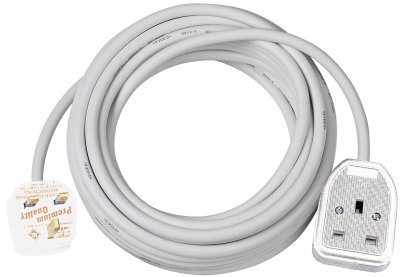

1166553015
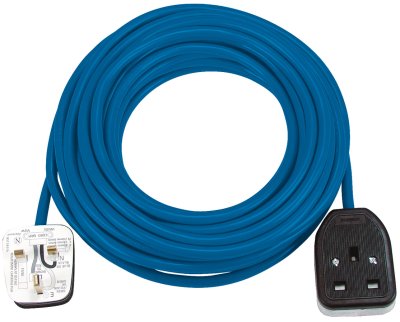

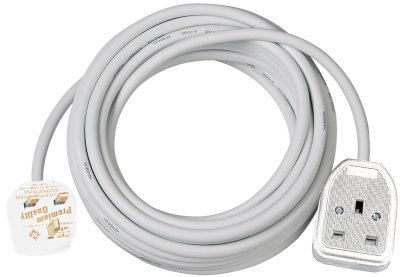

1166563015
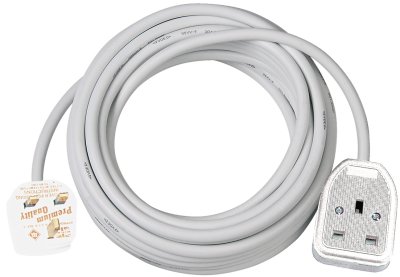

1166573015
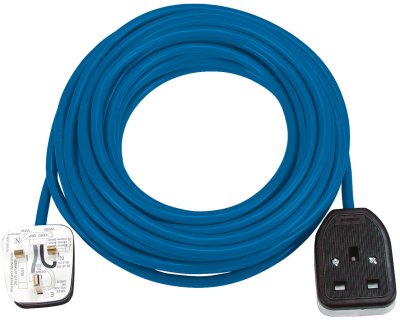

Selection of themes
Our portfolio of extension cables offers you a large selection of cable lengths, cable colours, cable qualities, CEE plug and socket connections and other sensible extras. The possible uses of extension cables range from indoor use to short-term outdoor use to use on building sites and continuous use outdoors.
Which extension cable is the right one for you? Using the filter options, find the suitable extension cable for each application.
10m, 25m or even 30m extension cable – which extension cable is the right one for my application and how long should it be?
Extension cables are available in many different designs, so, before buying one, you should ask yourself:
What do I need an extension cable for?
The most common cable lengths are: 3m, 5m, 10m, 20m, 25m and 50m extension cables.
The following purchase guide will definitely help you find the right power cable.
- Are there extension cables with a flat plug?
- Which extension cable do I need for outdoor areas?
- Which extension cable do I need for a campsite?
- Which extension cable is suitable for the lawnmower?
- Can you connect extension cables to one another?
- Frequently asked: How can you prevent an extension cable from twisting?
Extension cable with a flat plug
Flat extension cable for the indoor area – regardless of the location of the socket
An extension cable with an extra-flat plug is not only a 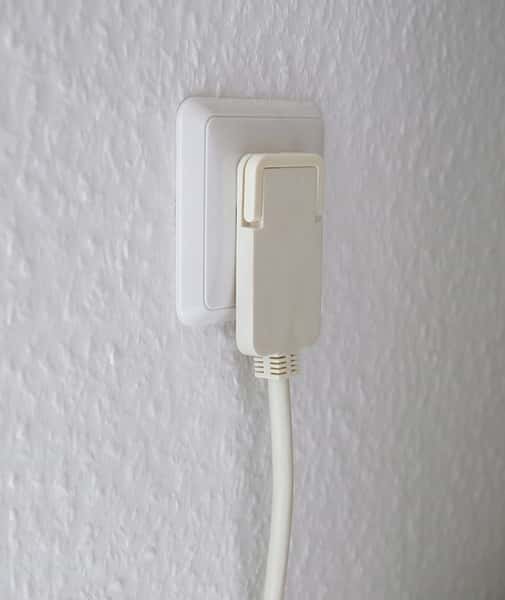 practical sondern auch eine space-saving solutionwhich is perfectly suited to sockets which are hard to access.
practical sondern auch eine space-saving solutionwhich is perfectly suited to sockets which are hard to access.
Thanks to the flat power cable, sockets located behind your living room cabinet or behind the sofa can be used cleverly. The flat extension cables by brennenstuhl® also have an intelligent folding handle – this allows for easy unplugging of the flat plug from the socket without any effort.
Shape your interior spaces regardless of socket fitting – there are no limits to your spatial planning.
Which extension cable is suited to the outdoor area and is therefore water-tight?
Outdoor extension cables – the perfect power source for your garden, balcony or even on construction sites
You need power on the balcony, in the garden or even on the construction site, but not a single socket in sight?
A clear case for an outdoor extension cable!
An extension cable for outdoors is inherently different from a power cable for the indoor area. Find out below which features you should definitely look out for when buying an extension cable for outdoors.
Extension cable for the outdoor area – what you should look out for
A robust extension cable for your garden or even construction site work is essential. Before buying an outdoor extension cable, make sure you look out for the following features:
> Minimum protection type IP44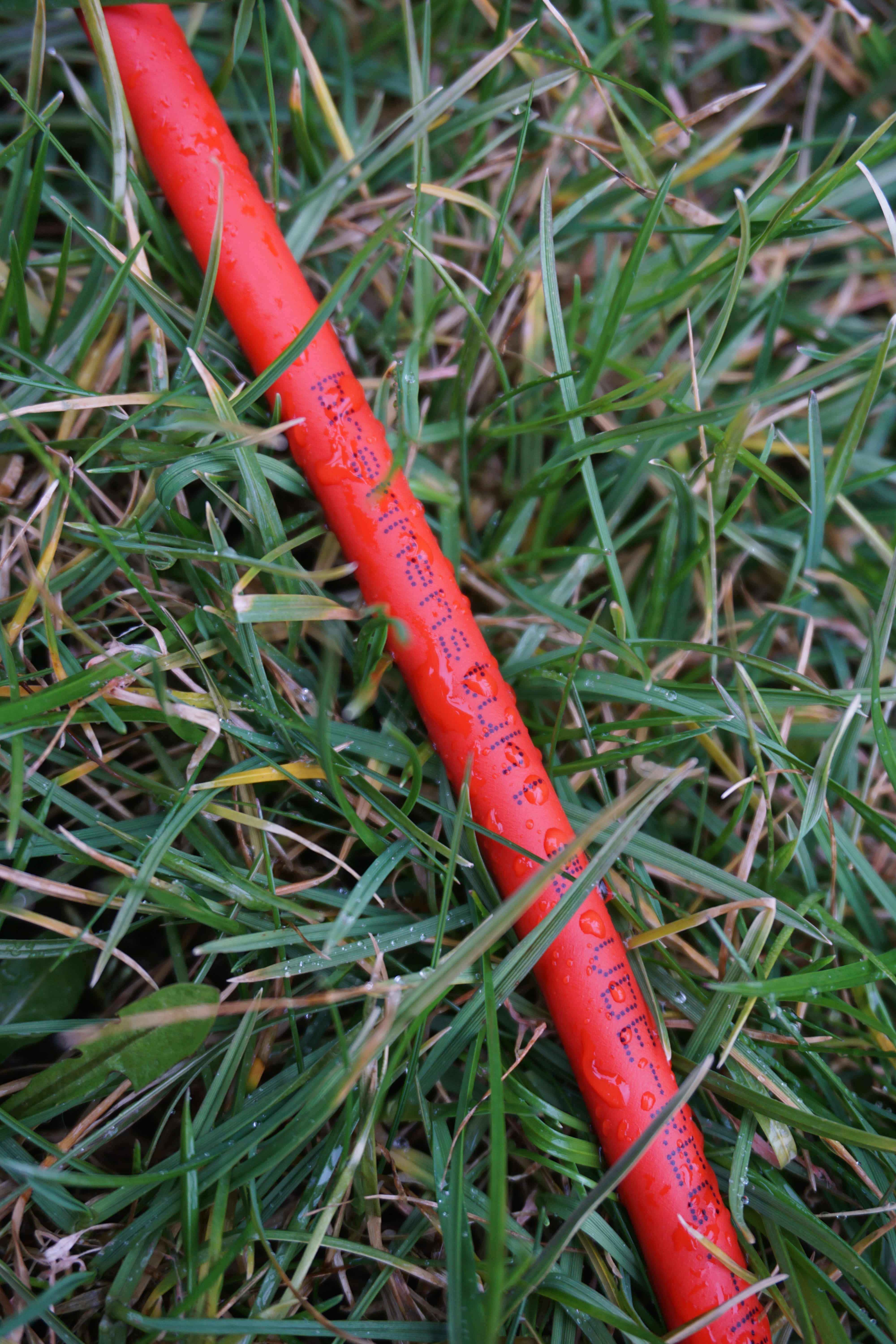
With this protection type, the extension cable is best protected against dirt and spray
> Signal colour
"Which colour should an extension cable have?"
Opt for the colour red or orange, so that the cable remains well visible even on the lawn
> Coupling with protective cap Schützt vor Schmutz und Nässe
> Cable quality
Determined also by the insulating cover and the cladding. The following cable qualities are suited to outdoor use: BQ, RN or V3V3. You can find out which cable quality is suited to permanent outdoor use here.
The most common extension cables for the outdoor area
How long the extension cable should be depends entirely on the type of work in the outdoor area. A 10m extension cable is probably enough to connect your electric grill – while a 25m or even a 50m extension cable is absolutely necessary when mowing the lawn.
However, these are the customary lengths:
> 10m extension cable
> 25m extension cable
> 30m extension cable
Time to go camping – which extension cable do I need?
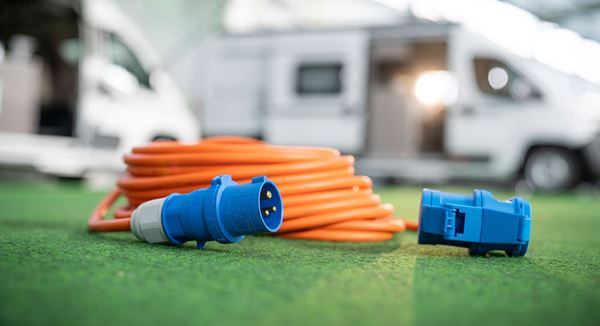 Spring is approaching and the campsites are filling up - so it's easy to ask yourself the question:
Spring is approaching and the campsites are filling up - so it's easy to ask yourself the question:
Which extension lead is the right one for my caravan and which plug do I need when camping?
Questions upon questions that you ask yourself before buying a camping extension lead to be able to use shore power. Newcomers to camping in particular find it difficult to choose the right camping power cable. Which extension cable, plug, adapter or cable drum you need when camping depends on the following factors:
- Connection at the campsite
- Type of motorhome or caravan
- Distance from the distribution box to the caravan
Which extension cable is the most suitable at the campsite - CEE cable and CEE plug
An extension cable for short-term outdoor use is not suitable for a campsite - why?
Camping extension cables must meet specific requirements and be equipped with CEE plugs. A power cable with a CEE plug system is part of the basic camping equipment, as the power cable is the connection between the distribution box at the campsite and the motorhome.
Camping extension cables are available in different cable lengths in the colour orange. The power cable in the signal colour orange is intended to increase awareness of potential tripping hazards caused by cables lying around.
Camping extension cables must not exceed a cable length of 25m and the conductor cross-section of the power cable for connecting caravans or motor homes must be at least 2.5mm² with a rated current of 16A. In addition, the plug and coupling must be dust and splash-proof (protection class IP44) and have a robust cable with the cable designation H07RN-F (or equivalent).
But there are also big differences in a CEE extension cable - the colour of the CEE plug plays a major role here.
Questions about questions: CEE plug in the colour blue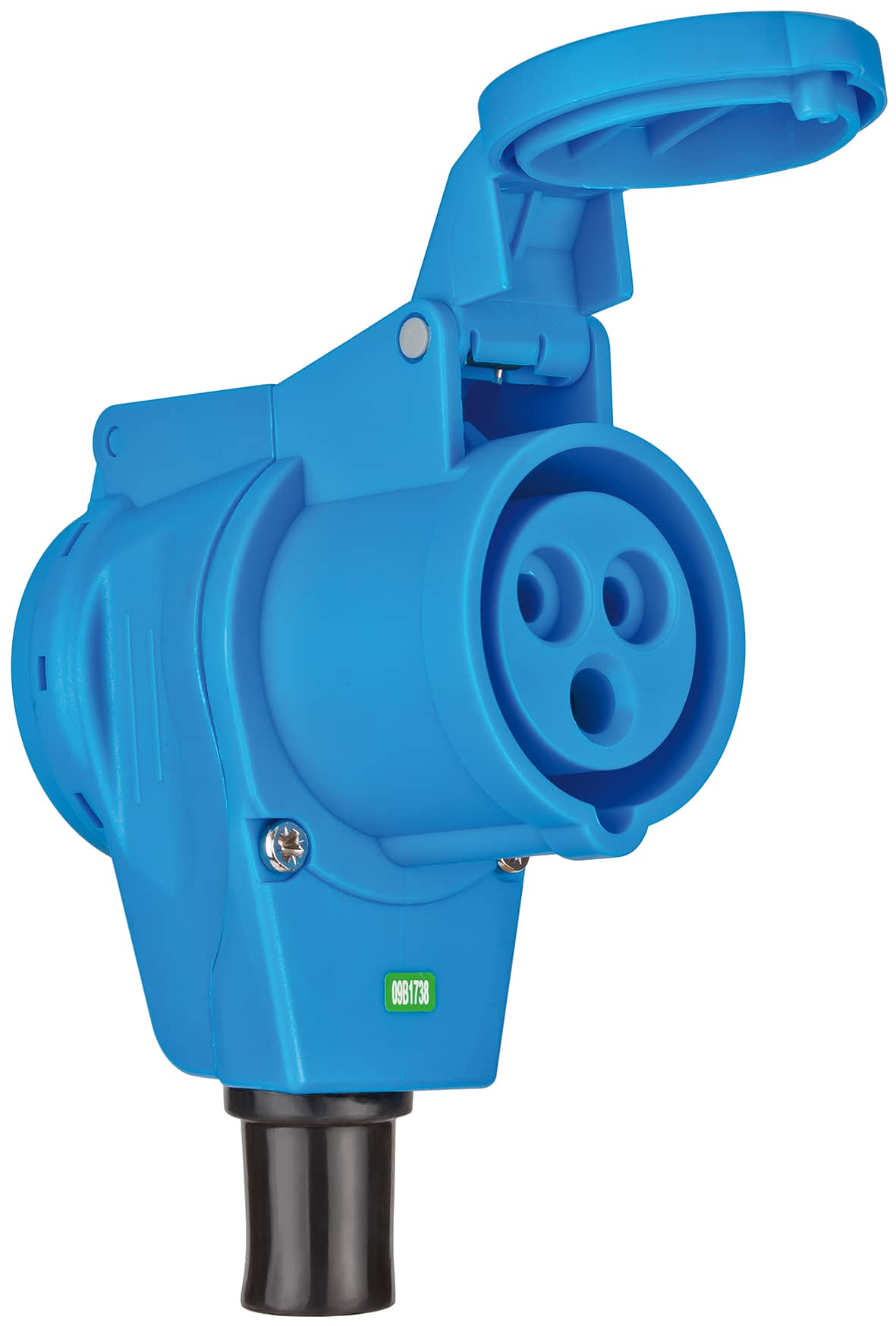 or red?
or red?
The importance of the colour of a CEE plug should not be underestimated - because the colour of the plug determines the voltage level, i.e. the number of volts. For camping, the blue CEE plug, also known as the caravan or camping plug, is necessary. The blue colour indicates the voltage range from 200V to 250 V throughout Europe. The blue CEE plug is available as a single adapter or as an adapter cable. Logically, there should be a blue CEE plug (3-pole) in the distribution box at the campsite.
You can find out the difference between the blue and red CEE plug here.
Which extension cable is suitable for my lawnmower?
Start the gardening season right with the proper lawnmower cable
Spring is approaching, the garden calls – time to freshen up your lawn.
Electric power is required to be able to put the lawnmower into operation.
Since power is generally known to come from the socket, which is likely in the house itself, in the garage or on the terrace, it is clear that:
You need an outdoor extension cable for the lawnmower!
What should you look for in an extension cable for the lawnmower?
An extension cable which is suitable for the outdoor area is required, i.e. an IP44 extension cable. The power cable should also have a signal colour, red or orange at best, so that the cable can always be well visible on your lawn. Furthermore, the power cable should consist of a rubber cover, since rubber cables are more flexible and therefore less fragile compared to the cheap plastic cable.
In summary, you should look out for the following: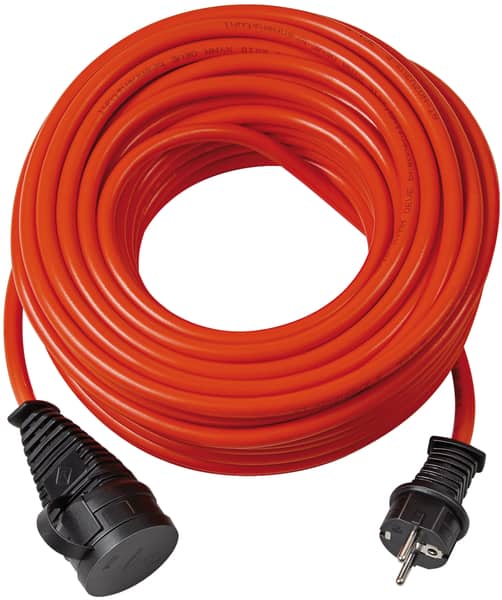
> Rubber cable
> Protection type IP44
> Signal colour (red or orange)
> Robust earth contact plug and coupling with sealing cap
Find out how you can make gardening easier and where you can find the perfect extension cable for the lawnmower here.
25m or 30m lawnmower extension cable – how long should the power cable be?
There is no provision or standard on the cable length – the ideal length of the power cable can be determined from the lawn area, more specifically from the distance that the power needs to cover.
However, the most common cable lengths are:
> 25m lawnmower extension cable
> 30m lawnmower extension cable
How many extension cables can be connected to one another?
Can you attach multiple extension cables to one another?
The answer is very simple:
It is forbidden to attach multiple extension cables to one another, and for a good reason!
Find out all the reasons why here.
Frequently asked: How can you prevent an extension cable from twisting?
Bye tangled cables – winding up the extension cable correctly
You’ve finished your gardening, now you have the annoying task of winding up the cable.
Those who have wound up their extension cable before are familiar with the problem of tangled cables, and ask themselves:
How can I wind up cables without knots?







